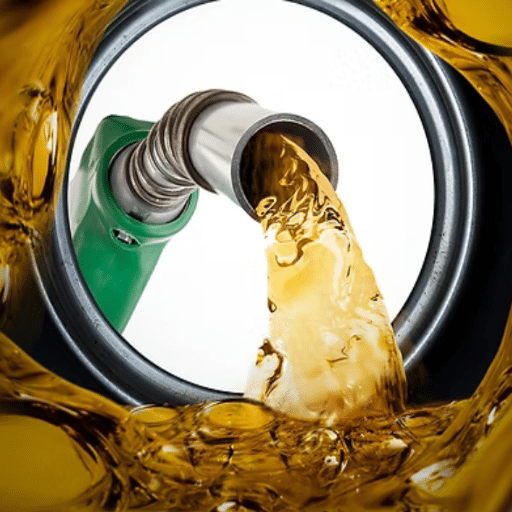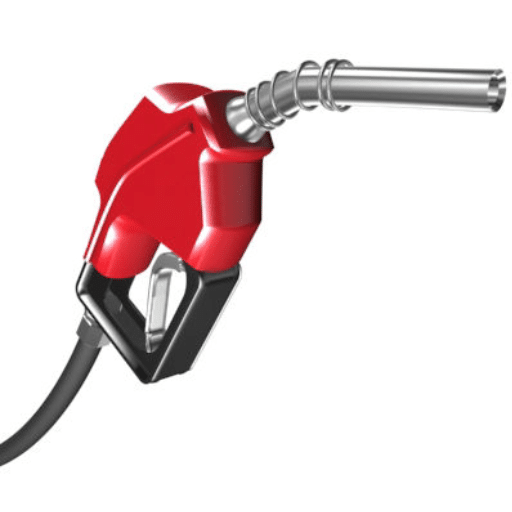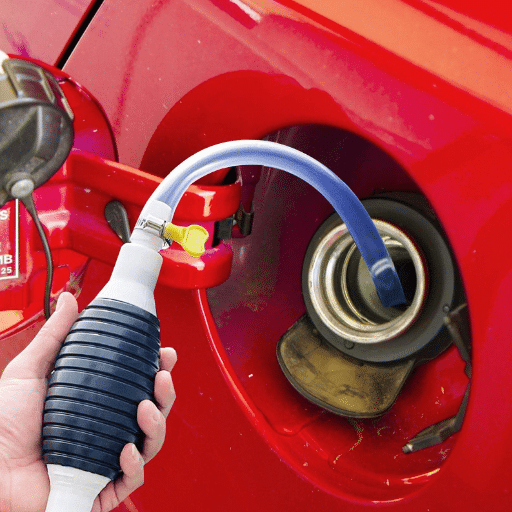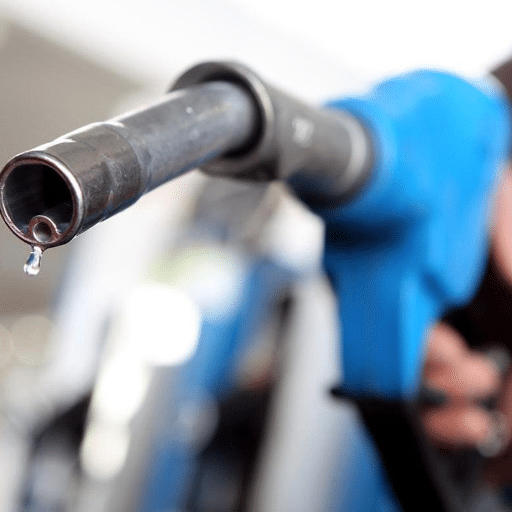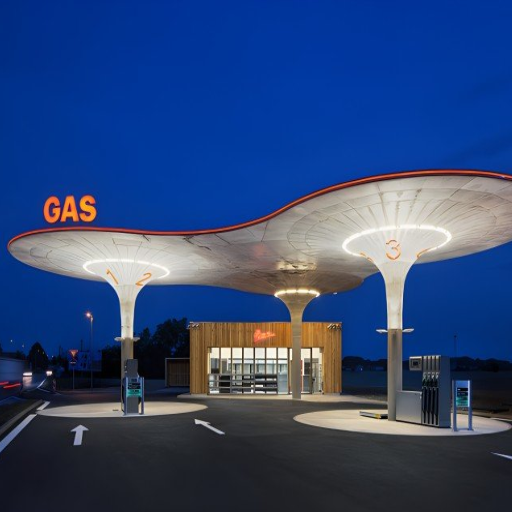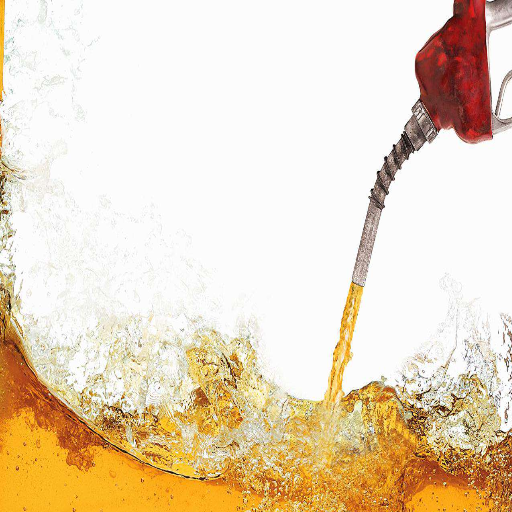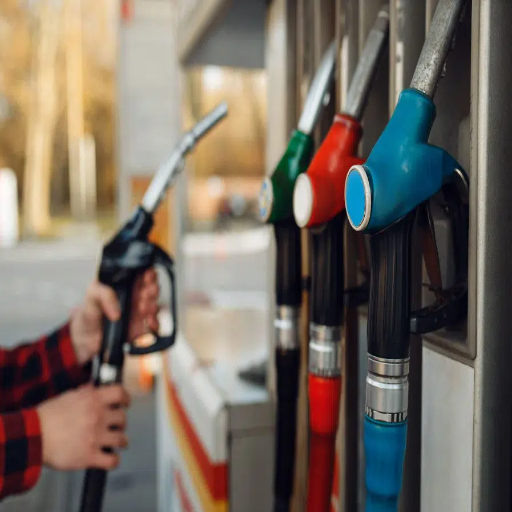Thunderstorms are spectacular acts of nature, with the cracking of thunder, the brilliant flash of lightning, and the fiercest rainfall. Usually, people try to stay safe during such storms, but many ordinary activities raise safety concerns, such as pumping gas. Is it safe to refuel your car if lightning is happening nearby? This article examines the science behind the subject, the associated risks, and common misconceptions surrounding it. So, whether you’re worried about lightning, static electricity, or the flammable nature of gasoline, we’ll have everything explained so that you stay safe and informed during stormy weather.
Understanding Thunderstorms and Safety Risks
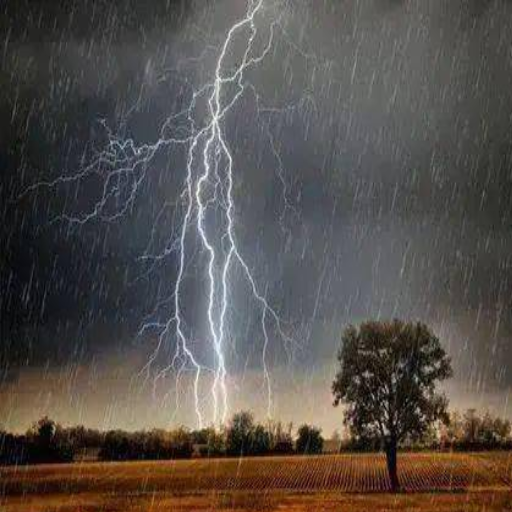
During a thunderstorm, refueling is generally safe, as gas stations incorporate several safety precautions to minimize the risk. Present-day gas pumps are grounded, which significantly reduces the possibility of sparks or static electricity. Lightning may be attracted to a tall or isolated entity, not a vehicle or a gas station. Nevertheless, it is best to adhere to a few general precautions during a storm: do not touch metal objects directly, and, if possible, stay inside your car. If the atmosphere feels uneasy, it is best to wait for the storm to pass before refueling.
The Nature of Thunderstorms
Thunderstorms are intricate systems that produce lightning and thunder, typically accompanied by heavy rainfall, strong winds, and even hail in extreme cases. They occur whenever warm, moist air rises quickly into the atmosphere, cooling as it grows. This leads to water condensation into tall cumulonimbus clouds. Typically, a thunderstorm has a 12-mile extent in height and lasts from 30 minutes to several hours.
Analyses of recent data indicate a worldwide prevalence of thunderstorms, with an estimated 16 million thunderstorm events reported annually. About 2,000 thunderstorms are active at any one time over the whole globe. There are thus approximately 100,000 thunderstorms per year across the United States alone. The frequency of thunderstorms is most significant in Florida and Texas due to their warm, humid climate.
Thunderstorms can be categorized into three main types: single-cell, multicell, and supercell storms, with different degrees of intensity and life cycle durations. Supercell thunderstorms cause maximum destruction, generating tornadoes and hailstones as big as two inches. Wind speeds in severe thunderstorms exceed 100 mph, underscoring the significant threat they pose to infrastructure and public safety.
In addition to their destructive potential, thunderstorms play a crucial role in Earth’s ecosystem by distributing water and thereby contributing to global temperature balance. They then work to recharge the aquifers and carry nutrients via precipitation that keeps plants and crops healthy. By understanding how thunderstorms work and how they behave, more accurate predictions of thunderstorms can be made, thereby reducing their impact on human life and property.
Potential Hazards While Pumping Gas
Pumping gas is a common task, but it presents hazards that require attention for safe handling. A significant risk is static electricity. A person may acquire a static charge while exiting a vehicle, and if it is discharged while touching the nozzle, the gasoline vapors can ignite, resulting in a fire. One way to lower that risk is to feel a metal surface well away from the nozzle to discharge any static before actually beginning to fuel.
Another fire risk is leaving the engine running during refueling. Gasoline fumes are highly flammable, and any running engine could potentially ignite the fumes. Never start refueling without turning off the engine. Lighting up a cigarette at the pump or having one lit is equally hazardous.
Other concerns are spills and overfills. Gas spills waste the precious fuel and also endanger the environment by contaminating soil and water. Overfilling releases fuels that can contribute to air pollution and pose a health risk upon inhalation.
The use of an electronic device, especially cell phones, is another debated matter at gas stations. Although studies have not conclusively linked cell phones to fires in gas stations, it remains generally advised to avoid distractions and focus on safe fueling practices.
Most hazards associated with pumping gas can be largely avoided with proper measures, which include avoiding distractions, turning off the engine, discharging static, and handling the nozzle properly. Fundamental to these measures are gas station operators, who play a significant role in maintaining the equipment and enforcing safety procedures to ensure consumer safety.
Weather Conditions to Watch For
Under specific weather conditions, fueling is not entirely safe, as certain situations pose varying risks. In hot weather, high temperatures increase the pressure inside fuel tanks, causing a buildup of vapor. So, overfilling of tanks should be avoided as much as possible to protect against the issues caused by vapors. However, when it is winter, fuel lines may get clogged with ice, especially if the tank is nearly empty. This is why keeping the fuel drum filled to the halfway mark will minimize this problem.
Heavy rainfall may cause problems with water contamination in fuel storage systems, so station operators should conduct maintenance more frequently. Also, lightning storms present a rare but extreme hazard because the presence of flammable vapors can increase the risk of ignition from the strikes. Hence, one should avoid fueling in the presence of lightning and wait till the passage of the storm.
Windy weather also poses hazards by unpredictably dispersing fuel vapors. This highlights the importance of maintaining awareness of your surroundings and ensuring that no ignition sources are present near fueling areas, such as cigarettes or open flames.
When these weather scenarios are monitored with proper safety practices, they will guarantee fortuitous refueling experiences in all circumstances.
Safety Guidelines for Pumping Gas in Rain
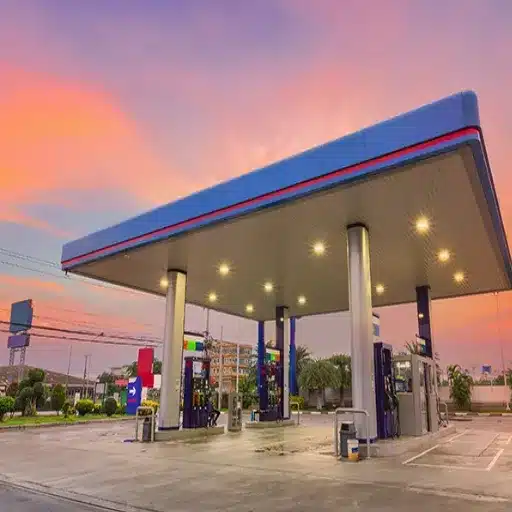
Avoid Using Electronics: Do not use cell phones or any other electronic equipment while pumping gas, as there is a fire hazard in the presence of fuel vapors.
Park Safely: One ought to make sure that the vehicle is parked securely away from large puddles so as not to become a slipping hazard or embarrass one’s footing.
Stay Dry and Focused: Protect yourself from the rain by using an umbrella or wearing a raincoat. Any wet clothing or hands could pose a complex and unsafe situation while holding the pump.
Check Slippery Surfaces: Rain renders the surfaces slippery, especially around the pumps, so proceed with care and avoid rushing.
Close the Gas Cap Properly: After the tank has been filled, ensure the gas cap is fitted correctly to prevent water from entering the fuel tank and damaging the car.
Assessing the Weather Before Driving
Before departing, it is always an essential step to review the weather for safety and preparation. Checking the latest forecasts will give you an idea of the potential for rain, snow, fog, or high winds, which can significantly impact driving conditions. Heavy rain, for example, drastically limits visibility and could increase hydroplaning, whereas snow and ice make driving a slippery challenge. Statistics show that 70 percent of weather-related crashes occur on wet roads each year in the United States.
Other than that, watch for falling temperatures that can cause black ice to occur. While black ice is the most invisible, it is also the most hazardous. Also, strong winds, especially when traveling on open or high-altitude roads, can intimidate a vehicle, huge ones like trucks or SUVs. For real-time weather updates, use a weather tracking app or website that provides localized conditions relevant to your route. Plan and allow for potential delays due to inclement weather, so that your drive becomes a safer and confident one.
Precautions to Take at the Gas Station
During peak hours, a gas station can become a potential hazard if security measures are not maintained. Safety dictates that the engines be shut off when refueling. Gasoline vapors can ignite almost instantly. It becomes an added risk to ignition with the engine running. Furthermore, refrain from smoking or having open flames or heat sources near the pumps, as this may result in disastrous accidents.
Another essential safety precaution while pumping gas is not to re-enter your car. There might be static electricity generated sliding in and out of the vehicle, and touching the pump nozzle might cause this electricity to ignite the fumes. Stay close to the pump and watch the entire gas pumping process to ensure that the pump nozzle is correctly inserted into the tank opening and that there are no leaks or spills.
When using mobile phones, heed all cautions and follow local regulations carefully. Keep your phone away from the nozzle and gas vapors to mitigate any risk of sparking. Also, if a spill occurs, inform the attendant immediately and do not attempt to clean up, as your improper procedures may aggravate the hazard.
Modern statistics accentuate the gravity of these safety precautions. Landgren et al. affirm that nearly 5,000 fires erupt annually at gas stations throughout the U.S., with most incidents arising from the improper handling of fuel or negligence in safety aspects. If you are vigilant about the listed precautions, you will surely save lives through extrication.
What to Do if Thunder Strikes
Thunder is formed abruptly on the nature of an event, and so it is of the essence that one acts fast and stays informed for safety reasons. When thunderstorms occur, lightning poses a life-threatening hazard. According to data, in the United States alone, lightning strikes kill an average of about 20-30 people per year, with hundreds more injured. To help reduce the risks involved, do the following:
Seek Shelter: If you hear thunder, you are at risk of being struck by lightning. Move indoors to a building with walls, plumbing, and electrical wiring. If no building is nearby, a hard-topped vehicle made from metal will offer some protection.
Avoid Conductive Materials Inside: You are to refrain from using any electrical appliances, wired electronics, or plumbing once indoors. Lightning may pass through wiring and water pipes, so it is best to avoid using common appliances like sinks, faucets, and showers.
Stay Away From Open Areas: While in the open with no shelter, avoid entering open areas, bodies of water, or isolated tall objects. Take a low crouch as close to the ground as you can, maximizing as much contact as possible without being the tallest object around.
Wait for the Storm to Let Go: Stay indoors or within your vehicle for at least 30 minutes after the last thunder is heard. In the manner that lightning strikes far beyond the radius of the actual storm, it pays to be patient.
By knowing these simple safety guidelines and exercising vigilance during thunderstorms, the risk associated with lightning and thunder strikes can be significantly reduced.
Gas Station Safety Measures
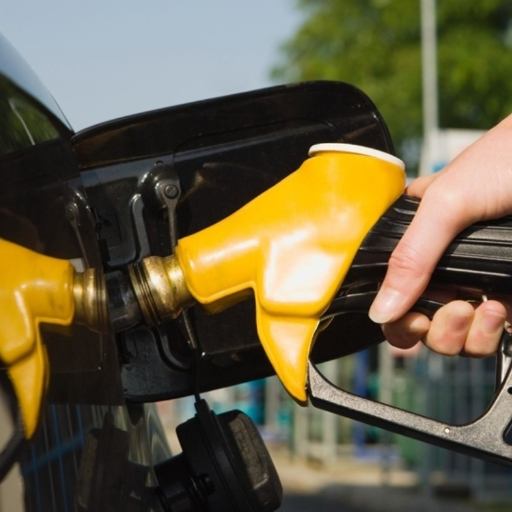
Turn Off Your Vehicle: Always ensure that your engine is turned off when filling up to prevent accidental sparks.
Avoid Using Mobile Phones: While at the pump, using mobile phones and distracting oneself can be hazardous, as it may lead to an accident.
No Smoking or Open Flames: Never light a cigarette or an open flame anywhere near the petrol station because the vapors of fuel are highly flammable.
Discharge Static Electricity: Touch a metal area away from the pumps to discharge static electricity from your body, thereby reducing the risk of ignition.
Follow All Signage: Follow safety signs and instructions posted by the gas station to ensure that fuel handling is done correctly and safely.
Gas Station Protocols During Thunderstorms
Safety measures should be taken at gas stations during thunderstorms. Lightning strikes pose a danger, having the capacity to ignite fuel vapors that are floating in the air. Safety instructions recommend that one avoid refueling in the immediate area while lightning is present. If refueling is necessary, the operator must ensure that strict safety measures are followed.
One primary precaution is to remain in your vehicle from the time the bad weather arrives. Standing outside and waiting is dangerous due to the risk of being struck by lightning. The metal body of the car acts as a Faraday cage, shielding its occupants from the shock. Using a cell phone at the pump should be avoided because even a small electronic device has the potential to generate a spark that may ignite.
Data suggests that winds, rain, and lightning can arise from thunderstorms with little warning, so it is better to remain alert and seek shelter quickly. Fueling station operators must ensure that their fuel storage tanks and pumps are sufficiently grounded to dissipate static electricity that a storm might amplify. Also, ensure that emergency stop buttons and all safety systems are in good working order in the event of an incident. Emphasizing safety along with these procedures will lessen the chance of accidents during thunderstorms.
Emergency Procedures at Gas Stations
Gas stations constitute critical infrastructure, and in the event of an emergency, whether caused by severe weather or an operational hazard, utmost safety measures are necessary. Statistical data on English language usage indicates that approximately 20-25 fires at gas stations in the United States are caused by lightning strikes annually, underscoring the need for stringent safety measures. Station operators should mitigate the risk by ensuring that all electrical installations, fuel pumps, lights, and emergency shutdown switches are regularly inspected and conform to safety standards.
Employees should be aware of how to handle various situations. Pumps would be shut off immediately, and staff would carry out evacuation procedures according to protocols while alerting local emergency services to a suspected fuel leak. It is also imperative to establish a straightforward communication procedure between staff and customers to prevent confusion or panic in the event of an emergency.
Another layer of preventing hazards would be for a modern gas station to install state-of-the-art safety systems, such as vapor recovery systems or an automatic fire suppression system. These systems limit the release of flammable vapors while responding quickly to any fire occurrence. With these systems in place and following industry best practices, the operating gas station enhances the safety outcomes for both employees and customers.
Choosing the Safest Gas Station
The safest gas station must consider several aspects to ensure the well-being of both the driver and the passenger. Gas stations that are well-lit and in secure, busy lanes or streets tend to discourage criminal activity and, therefore, should be preferred. Security cameras can also be a boon to the safety of a gas station, along with an evident security staff presence.
Recent reports have claimed that the risk of an accident drops substantially in stations equipped and furnished with automatic safety measures, such as pump shut-off systems and leak detection systems. Along with safety in terms of accident prevention, new-age stations also implement measures to enhance personal safety by minimizing physical contact, such as contactless payment.
Environmental safety is now a growing concern. Such stations, equipped with vapor recovery systems and green fueling technologies, reduce the emission of harmful fumes, thereby ensuring not only personal safety but also environmental health. Considering these features will enable a driver to make informed choices in line with safety and sustainability.
Alternatives to Pumping Gas During Stormy Weather
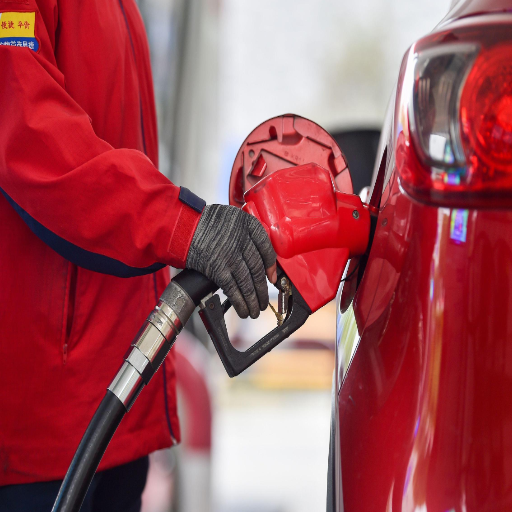
Plan Ahead – Refill the vehicle’s gas tank before a storm is forecasted to avoid uncomfortable situations at the pump. Generally, it is recommended to keep at least half a tank of fuel.
Full-Service Stations – Some gas stations offer full-service refueling where an attendant pumps your gas for you and keeps you safe inside the car during inclement weather.
Charging – An AC electric vehicle can be charged in a garage or at covered charging stations, which are usually safer during storms.
Fuel in Your Driveway – New mobile fueling apps and on-demand fuel delivery services enable your automobile to be fueled up wherever you are, without even needing to visit a gas station.
If there is no sudden need to fill up with petrol, consider either carpooling or taking public transportation to avoid being stranded during a storm.
Through these alternatives, you can prioritize safety and mitigate the risk in stormy weather situations.
Staying Safe: When to Wait
Determining when it is best to stay put during a storm will reduce risks and keep you safe. Severe weather events, such as thunderstorms, hurricanes, or heavy snowfall, create hazardous conditions characterized by reduced visibility, slippery roads, and the potential for rocks or debris to fall. Recent data indicate that almost 70% of weather-related vehicle crashes occur on wet pavement, and over 40% happen while it is raining. In such situations, it is always safer to wait out the storm in a secure location, as this guards against these hazards and accidents.
Continue to check the weather updates, as they can provide valuable insights into what’s happening with nature. Weather updates, alerts, and warnings issued locally will help you evaluate the situation. For example, if the winds are forecast to exceed 39 miles per hour, it is dangerous to be outside, as falling trees and flying debris could pose hazards. Flash flood warnings, on the other hand, are a clear sign to stay put because 6 inches of base water can knock over an adult, and 12 inches can float almost all cars.
Keep your eye out, and when the weather is going to be extreme, prioritize safety for yourself and those around you by avoiding unnecessary risks.
Using Public Transportation
Being a public transport, it can be safe and reliable when properly handled, and even in extreme weather conditions. Many transit systems, including buses and trains, are designed to operate continuously even during adverse weather conditions. Thus, one must constantly monitor service updates, as delays, route changes, or cancellations may be caused by heavy rain, snow, or strong winds. In broader terms, for example, some metropolitan underground systems might temporarily cease above-ground routes during the storm to avoid any danger.
Statistics have proved that public transport is often a reliable way of getting around when road conditions worsen, with railways seeming to be less affected than road-based vehicles. Planning your travel by checking the live transit schedules will help you avoid unnecessary waiting times. Moreover, be sure to equip yourself with suitable attire against the elements—something along the lines of a waterproof jacket and sturdy shoes—to keep you at ease and safe while waiting at bus stops or train stations. Furthermore, public transit hubs typically become official shelter sites during severe storms, lending added protection to commuters.
Planning for Fuel Needs
Efficient fuel planning is essential in performing cost-effective and reliable traveling. Gasoline prices in the U.S. fluctuate, ranging from approximately $3.50 to $4.00 per gallon, depending on the time, location, and global market conditions. Then keep in mind that the fuel can be best utilized by vehicles with higher miles per gallon (MPG) rates, such as hybrids or electric cars, which may achieve more than 50 miles per gallon in certain instances, as opposed to the cost of buying gasoline per mile with a conventional gasoline-only vehicle.
For long-distance journeys, mapping out the gas stations available along the way and monitoring their prices with the help of fuel price tracking apps or websites can help you select the cheapest option among them. Secondly, keeping your vehicle maintained and undergoing regular checks can also help with fuel savings. This includes maintaining proper tire pressure and keeping air filters clean. This can result in a 10 percent increase in fuel efficiency. Thirdly, employing smooth driving techniques, such as gradual acceleration and soft braking, can save on fuel and money in the long run.
When winter arrives, depending on heating oil or propane for home fuel needs, a late-season purchase of heating oil may save you substantial sums. According to recent trends, the price of home heating oil has been fluctuating in line with demand cycles, and buying in anticipation has yielded significant benefits. The incorporation of all these methods contributes to meeting fuel requirements and alleviating financial concerns.
Final Thoughts on Pumping Gas in Thunderstorms
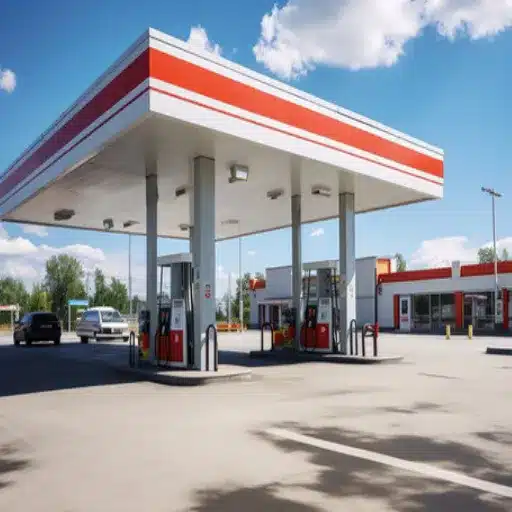
There is a general worry about pumping gas during a thunderstorm, but if standard safety precautions are followed, it is usually relatively safe. To reduce hazards, the gas station has implemented certain safeguards, including protection against lightning. Still, it is advisable to avoid standing in the open or touching metal objects during severe weather. Forgo refueling if the lightning is heavy until the weather calms down, so that one can be safe.
Key Takeaways on Pumping Gas in a Thunderstorm
Gas Stations Are Built for Safety: Modern gas stations have been designed with considerations to minimize the risk of lightning strikes. To wit, underground fuel storage tanks and grounded fuel delivery systems reduce the risk of fires or explosions resulting from an electrical surge.
Avoiding Direct Contact With Metal: Lightning prefers to hit conductive surfaces; metal is one of them. To minimize your risk, avoid leaning against your car during a thunderstorm. Also, refrain from handling metal nozzles unnecessarily and keep away from any exposed metal surfaces.
Stay Inside Your Car Whenever Possible: Should the thunderstorm get too intense for your liking at the station, stay in your car. Cars act as Faraday cages to an extent, giving you an extra layer of protection if lightning hits.
Statistical Risks are Low, but the Need for Caution is High: Lightning strikes on gas stations are sporadic because of protective measures. However, statistics from NOAA indicate that your lifetime odds of being struck by lightning stand at roughly one in 15,300. Hence, always reduce outdoor exposure during storms.
Timing is Important: Whenever possible, hold off on any non-essential tasks, such as refueling, during an active storm. Waiting until the storm subsides is the safest bet, especially in the presence of weather watches or warnings.
Knowing the guidelines and following the simple precautions mentioned will eliminate your worries of refueling while facing inclement weather.
Staying Informed About Weather Alerts
To remain safe during unpredictable weather, it is essential to heed weather warnings. I rely on trusted sources, such as weather apps, local TV channel broadcasts, and emergency notifications, to stay informed. By setting alerts on my devices and regularly checking these sources, I never have to worry about being caught off guard by any weather changes.
Reference Sources
Frequently Asked Questions (FAQs)
Is it safe to pump gas during a thunderstorm?
No, it’s generally not safe to pump gas during a thunderstorm due to the risk of lightning strikes. Lightning can cause explosions and fires, especially if it hits a nearby gas tank or ignites gasoline vapors. It’s advisable to wait until the storm passes before fueling your vehicle.
What should I do if I’m at a gas station and it starts to rain heavily?
If it starts to rain heavily while you’re at the gas station, it’s best to stay inside your vehicle until the storm passes. Avoid using the gas nozzle or touching metal equipment during a thunderstorm to minimize the risk of a lightning strike.
Can lightning strike a gas station?
Yes, lightning can strike a gas station, especially if it’s the tallest structure in the area. This poses a significant risk of fire and explosion if lightning hits a gas tank or ignites gasoline vapors. Staying inside your car can provide some protection from a direct lightning strike.
What are the dangers of pumping gas in a thunderstorm?
The primary dangers of pumping gas in a thunderstorm include the risk of lightning strikes, which can lead to explosions or fires. Additionally, wet conditions can create slippery surfaces and increase the chances of accidents or equipment malfunctions.
How far should I stay away from gas pumps during a thunderstorm?
It’s recommended to stay at least 30 feet away from gas pumps during a thunderstorm. This distance helps reduce the risk of injury from a lightning strike or other related hazards, such as sparks from static electricity.
Is there a safe way to pump gas in inclement weather?
In inclement weather, it’s safest to wait until the storm passes before pumping gas. If you must fuel your vehicle, do so quickly while being cautious of your surroundings, and avoid touching any metal parts of the pump or your car during lightning activity.
What conditions make it dangerous to pump gas?
Pumping gas becomes particularly hazardous during thunderstorms due to the potential for lightning strikes, heavy rain that can cause slippery surfaces, and the risk of static electricity igniting gasoline vapors. Always prioritize safety and wait for better weather conditions if possible.
What should you do if you get caught in a storm while pumping gas?
If you get caught in a storm while pumping gas, immediately stop fueling and seek shelter inside your vehicle or the gas station building. Stay away from metal objects and avoid touching the gas nozzle until the storm has passed to reduce the risk of electrical injuries.

